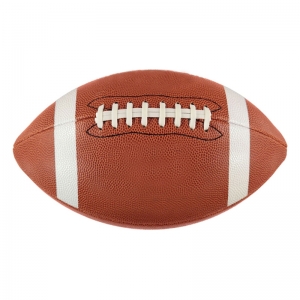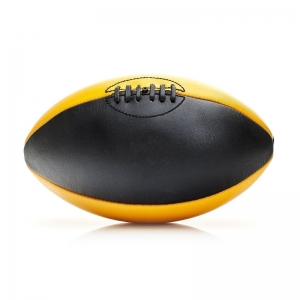Rugby balls are the key gear utilized in the game of rugby. Here are a few critical highlights and contemplations in regards to rugby balls

Shape: Rugby balls are customarily oval or ellipsoidal in shape, intended to make them erratic when they skip. The shape works with taking care of and passing strategies exceptional to rugby.
Material: Rugby balls are regularly made of calfskin or engineered materials like elastic or PVC. The decision of material can influence the ball’s grasp, sturdiness, and execution in various atmospheric conditions.

Size: Rugby balls come in various sizes in light of the degree of play and the age bunch. There are standard sizes for senior, junior, and smaller than expected rugby, each with explicit aspects and weight.
Expansion: Rugby balls should be appropriately expanded to guarantee they meet the expected size and shape principles. The suggested pneumatic force is normally demonstrated ready.
Grasp: The outer layer of the ball normally includes a grasp example or surface to help players in holding and passing the ball safely, particularly in wet or sloppy circumstances.
Variety: Conventional rugby balls are brown, yet current forms might come in different tones. High-perceivability tones are much of the time utilized in proficient matches to improve perceivability for players and onlookers.
Marking: Rugby balls utilized in matches may show the logo of the supporting association or occasion. In any case, for sporting and special purposes, rugby balls can be tweaked with logos, messages, or marking for groups, organizations, or occasions.
Quality Principles: Rugby balls should stick to specific quality norms set by rugby administering bodies like World Rugby. These norms guarantee fair play and consistency in the qualities of the balls utilized in true contests.

Climate Obstruction: Contingent upon the materials utilized, rugby balls might be intended to endure different atmospheric conditions. A few balls are explicitly designed for all-weather conditions use, giving strength and execution in different conditions.
Kickability: Rugby balls ought to consider precise kicking, and the shape and weight circulation assume a part in how well a ball answers different kicking strategies.
It’s vital to take note of that there are various kinds of rugby balls for different organizations of the game, including rugby association and rugby association. While choosing a rugby ball, consider factors, for example, the degree of play, the age bunch, the playing conditions, and whether it is for official matches, preparing, or sporting use. Observing appropriate consideration and upkeep rules will likewise add to the life span and execution of the rugby ball.
